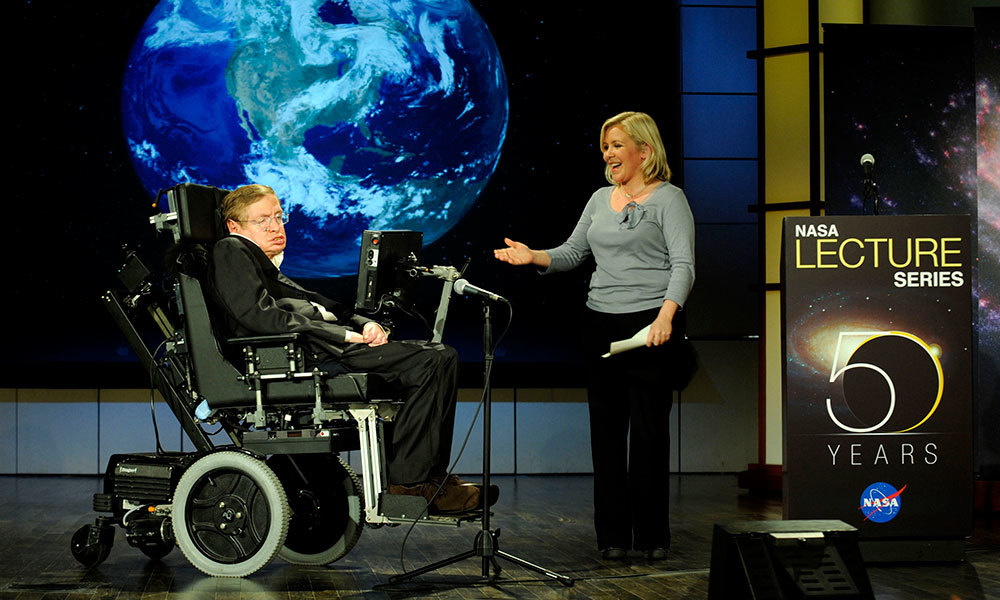
Hawking Taught How to Bring Complex Ideas Down to Earth
The famed theoretical physicist Stephen Hawking, who died this week, explored ideas that were out of reach for most ordinary people. But the man who studied the far reaches of the universe proved that complex ideas can be made accessible closer to home.
Stephen Hawking was many things—the most celebrated theoretical physicist of our time, a scholar who occupied the same seat at Cambridge as Isaac Newton, an explorer of cosmic concepts beyond most people’s grasp. But he was also a semi-regular guest star on The Simpsons and (fittingly) The Big Bang Theory, as well as a popular author with mainstream appeal and a famous sense of humor.
What do those of us without Olympian IQs make of such a career? What can an association professional strive to emulate? For those in the business of education and advocacy in complicated and highly technical fields, perhaps it’s this: Hawking, who died this week at 76, knew how to bring complex ideas down to earth.
Hawking, of course, faced challenges in his life, many of them stemming from his physical condition. Having been diagnosed with amyotrophic lateral sclerosis (ALS), a neurological disease that affects motor function, at age 21, he lived with the condition for 55 years, communicating and getting around with the help of a customized computer and wheelchair.
His slowly deteriorating health didn’t affect his work—he was known for saying that “theoretical physics is one of the few fields in which being disabled is no handicap”—and Hawking went on to develop breakthrough theories on quantum mechanics and black holes that he first published in the scientific journal Nature in 1974.
But it was in his 1988 book A Brief History of Time that Hawking shared his theories with a mass audience, making them explicitly nontechnical and accessible to the average person. In a passage explaining the nature of antimatter, for example, Hawking wrote, “There could be whole antiworlds and antipeople made out of antiparticles. However, if you meet your antiself, don’t shake hands! You would both vanish in a great flash of light.”
He made almost nonsensical numbers more understandable, writing, “A million million million million (1 with 24 zeros after it) miles, the size of the observable universe.”
And he used humor deftly to acknowledge the difficulty of the questions that theoretical physics sometimes leads to: “As we shall see, the concept of time has no meaning before the beginning of the universe. This was first pointed out by St. Augustine. When asked: ‘What did God do before he created the universe?’ Augustine didn’t reply: He was preparing Hell for people who asked such questions.”
There were some practical reasons for Hawking going in this direction. His longtime colleague Roger Penrose noted in an obituary published in The Guardian on Wednesday that one reason Hawking wrote the book was to help cover the significant medical costs he and his family faced, not all of which were covered by the research grants he received.
Ultimately, the gambit worked. The reason people picked up Time was because of the way Hawking presented complex ideas.
The book raised his public image, which led to public speaking opportunities, to The Simpsons and The Big Bang Theory appearances, and eventually to the Oscar-winning 2014 biopic on his life, The Theory of Everything. And as Hawking became a cultural icon, he used his position as a prominent person with a disability to provide a voice of support and encouragement for others who face similar challenges.
“My advice to other disabled people would be, concentrate on things your disability doesn’t prevent you doing well, and don’t regret the things it interferes with,” he told The New York Times in 2011. “Don’t be disabled in spirit, as well as physically.”
The Motor Neurone Disease (MND) Association, the UK equivalent of the ALS Association, noted on Wednesday that Hawking’s life was inspiring to the large number of people who have also lived with the disease.
“Through so many years in the public eye he did a huge amount to raise awareness of motor neurone disease (MND), yet he never allowed himself to be defined by his illness,” said Sally Light, the MND Association’s CEO, in a statement. “His approach to life with MND is an example to all of us.”
Stephen Hawking, at a 2007 NASA event with his daughter, Lucy. (NASA/Paul Alers)






Comments